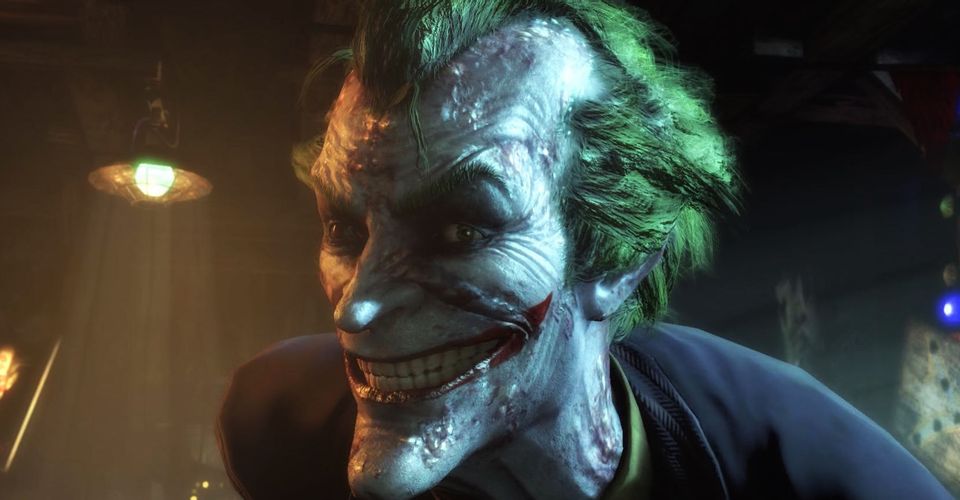The Most Shocking Video Game Moments Of All Time

Video games have a unique advantage when it comes to storytelling. They put you in the center of the experience like no other medium. Hollywood can throw bigger screens, bigger speakers, 3D and moving seats at us all they want, but they’re not going to reach the level of interactivity that video games offer. As such, gaming is capable of some truly surprising moments and is able to pull the rug from under you expertly. We decided to collect and celebrate all the twists, turns and revelations that left us slack-jawed and shell shocked, deepening our love of gaming that little bit more.
As it’s hard to objectively quantify surprise, here are our 18 Most Shocking Moments In Video Games, presented in no particular order. Warning: major SPOILERS lie ahead!
18 “No Russian” – Call of Duty: Modern Warfare 2

The Call of Duty series isn’t exactly high up on the list when one thinks of story-driven games. What started as a World War II series soon evolved into a more up-to-date military shooter with Call of Duty 4. Whilst the original Modern Warfare had its own shocker (put a pin in that, we’re coming back to it) when it came time to make a sequel, developer Infinity Ward ignored the rule of diminishing returns and upped the controversy considerably with the “No Russian” mission.
For the fourth mission of the game, you play as Alexei Borodin (actually undercover CIA agent Joseph Allen) and you join a group of Russian terrorists as they massacre civilians in a Moscow airport. It’s a brutal, graphic and genuinely disquieting level as you casually mass murder your way through Zakhaev International with four other gunmen helping you to mow down the crowd. It attracted a lot of controversy in the media at the time, with only some of the criticisms mitigated by the fact that you personally don’t have to shoot anyone and there being an option to skip the level entirely with no penalty or missed story.
17 The last stand – Halo: Reach

Halo: Reach was developer Bungie’s last Halo hurrah before moving on and fulfilling their destiny. The history of the Covenant War was well known by Halo fans beforehand, but the prequel gave gamers the chance to play through humanity’s first encounter with the evil Covenant for themselves. You play as part of the Spartan supersoldier Noble Team as they investigate why a communications relay has gone offline on the planet Reach. They soon discover an invasion force and things start to spiral downwards for the player character Noble Six and his team from that point on.
After neatly tying up events and linking to Halo: Combat Evolved, players are given a post-credits scene, with the stranded Noble Six making a heroic last stand against overwhelming Covenant forces. You hold out as long as you can, but soon you realize you aren’t getting out alive. Whilst it may not be a huge shock as the end was inevitable and well telegraphed, the blend of gameplay and storytelling is what makes it a surprise when you suddenly realize that this is how it ends. It’s a genuinely effective moment and a great way to get the player to experience the futility first hand without simply reverting to a cutscene to express the same basic idea.
16 Clementine will remember this – The Walking Dead: Season One

Starting from humble beginnings making poker games, Telltale Games started to branch out and pick up tv and movie licenses, making episodic adventure games based on properties like Back to the Future and Jurassic Park. However, they gained a lot of mainstream attention when they got the rights to adapt a small, obscure property that only a scant few of you will have heard of – The Walking Dead. The game shares the same universe as the comic and focuses on university professor and convicted murderer Lee Everett and his unlikely friendship with a young girl named Clementine. The game changed based on the choices the player made, with decisions carrying over from one episode to the next. It was a well-written and affecting story that made you genuinely care about the characters, especially Clementine.
In the fifth episode, “No Time Left”, Lee wakes up to find Clem gone. He frantically looks for her, but is bitten by a walker in his distracted state. He finds Clementine held captive by a crazy survivor in a hotel and saves her. As they leave the hotel, Clem sees her missing parents, stumbling around as walkers. Never one for great timing, Lee passes out and the pair hole up in relative safety. Lee realizes he’s going to turn soon, and the player can either choose to have Clementine execute him or leave him to turn, both paths leaving her on her own again. It’s a heartbreaking moment, and the voice performances by Dave Fennoy and Melissa Hutchison are especially great. Yes, it’s a zombie game and people die all the time, but after playing five episodes, getting to know the characters and seeing how much young Clementine has lost, it’s hard not to hope for some kind of happy ending. When tragedy strikes, it still manages to be a gut punch from out of left field.
15 Death and rebirth – BioShock Infinite

BioShock Infinite traded the leaky underwater setting of Rapture for the golden floating city of Columbia. Former detective Booker DeWitt is sent to Columbia with the simple instruction: “Bring us the girl and wipe away the debt”. Columbia was founded by religious zealot Zachary Comstock, who seceded from America and whose ideals are responsible for the barely contained ugliness under Columbia’s surface. Booker soon rescues a young woman named Elizabeth, and the pair endeavor to escape Columbia before Comstock or the escalating war catches up to them.
In a move that recontextualizes the entire series, it transpires that the BioShock games are part of a multiverse, with different variations around the same theme. In this universe, Booker and Comstock are different people, but in others, a baptism and rebirth after the hellish events of the battle at Wounded Knee led Booker to be reborn as Zachary Comstock and founding the twisted city. The game ends when Booker decides the only way to end the cycle is to die at his baptism. Multiple versions of Elizabeth gather around him and he allows them to drown him by holding him underwater. Whilst twist endings aren’t anything new for the BioShock series, the depth and complexity of this one makes it stand out. Plus, it retcons the previous game (and possibly BioShock 2) into one single continuity, which is mind blowing in its own right.
14 Vance for the memories – Half-Life 2: Episode 2

Whilst the long-awaited vaporware title Half-Life 3 has become an internet joke, there’s no denying that there are some things left to be resolved in Gordon Freeman’s story. The last entry, Half-Life 2: Episode 2 ended on a pretty big shocker, and fans have been waiting for ten years for some kind of resolution.
In the closing moments of the game, Gordon Freeman, Alyx and Eli Vance have managed to close a portal, trapping the alien Combine forces on Earth. The trio prepare to escape in an old helicopter, but a pair of Combine Advisors (sort of creepy, floating potato things with arms) burst in and restrain our heroes. Whilst Gordon and Alyx are pinned, Eli tries to fight back, but is easily overpowered. An Advisor picks him up and uses its tongue/proboscis thing to kill the kindly Eli in front of his daughter. Faithful robot Dog manages to save the two, put gets there too late to do anything about Eli. The game slowly fades out as Alyx cries over her dead dad and Freeman passes out. Perhaps it’s the lack of closure that makes this one sting. It’s sudden, sad and — since it’s been a whole decade since Episode 3 was announced — a rather depressing parting shot for such a well-regarded series.
13 The opening flashback – The Last of Us

Naughty Dog’s The Last of Us was released in 2013 to widespread critical acclaim. One of the main things it was praised for was its story-driven complexity and the relationship between grizzled veteran Joel and tough teenager Ellie. There’s basically been a zombie outbreak, with a (terrifyingly real-life) zombifying fungus called Cordyceps responsible. The world as we know it has changed, and Joel and Ellie must travel across a post-apocalyptic America to find some answers.
The game opens with the start of the outbreak. The first character you play as isn’t Joel, but his daughter Sarah, as she wakes up to an empty house. Joel soon shows up, informs Sarah something’s happened before one of their neighbors comes crashing through their screen door, crazed and looking for blood. Joel shoots him and he and Sarah escape with her Uncle Tommy in a car. It’s only then that they see the extent of the devastation. The car crashes and Joel is left carrying the injured Sarah up a hill where they’re met by a soldier who opens fire on the pair of them. Tommy is close behind, but it’s too late to save Sarah, who soon dies from a shot to the gut. It’s a legitimately heart-wrenching moment, and it’s all in the first 15 minutes of the game.
Some may argue the game’s ending is the more shocking, but this is the pivotal scene that lays out all of Joel’s baggage. It’s not only an immediate and effective kick to the feels, but gives us the reason for his flaws, makes sense of his relationship with Ellie, and contextualizes his actions towards the end of the game.
12 Revan-lations – Star Wars: Knights of the Old Republic

The pairing of a then-still good and not defunct LucasArts and RPG maestros BioWare proved to be a fruitful one when the excellent Star Wars: Knights of the Old Republic was released in 2003. The game was set 4000 years before the Empire goose-stepped their way around the galaxy. Your character, male or female, wakes up on a Republic ship under attack by Darth Malak and his followers. You eventually escape, going on a journey across the galaxy to discover where Malak is getting his armies from, all the while growing in strength as you learn new and exciting Force powers.
After you discover the Star Forge, the source of Malek’s power, the game drops a bomb on you. You’ve been the fabled Darth Revan all along, Dark Lord of the Sith and Malek’s master. You were taken in by the Jedi Council and brainwashed to fight for them. How you progress from there is up to you. You can either destroy the Sith and become a Jedi hero or reclaim your throne and return to the Dark Side. Whichever path you take, it’s a surprising and well-executed twist in one of the best Star Wars games ever made.
11 Flowey knows – Undertale

Undertale starts messing with you as soon as you start the game. You encounter the ostensibly friendly looking Flowey the flower, who immediately tries to kill you. As you progress, you learn that the game has a serious moral choice at the core of it and you can either choose to kill or spare every enemy in the game. However, say that you kill an enemy, or accidentally hurt Toriel the kind goat mother, feel bad and want to start again. No problem, just reset and start anew, right?
Wrong. Flowey knows what you did. In a true fourth wall breaking meta moment, the game seemingly starts as normal, but this time Flowey knows what you’re up to, why you restarted and mocks you for it. The whole game is filled with moments like this, but this one is especially likely to catch new and unsure players off-guard. Welcome to Undertale. Your brain will be bent and twisted many more times before the credits roll. Stay determined.
10 Bureau betrayal – Red Dead Redemption

Second only to Grand Theft Auto, Rockstar’s Red Dead series is one of their most talked about properties, despite there only being two games and nothing but rumors about a sequel in the six years since Redemption‘s release. You play as John Marston, a former outlaw forced to work for the Bureau of Investigation in taking down an old gang member of his. Marston agrees, if only to keep his family safe and go back to his simple life as a rancher afterwards. It’s a mashup of all the greatest Western movies with the core of GTA‘s gameplay, and that’s exactly as great as that sounds on paper.
As Marston knocks former gang members off his list, the Bureau persists in moving the goalposts every time, keeping John working for them. After dealing with his former gang leader, Dutch van der Linde, Marston is finally released from his contract and allowed to return home to his wife and son. However, the Bureau aren’t done with him and storm his ranch with a ton of lawmen and government agents. Marston manages to repel some of them and get his family to safety, but is soon gunned down by the combined forces, tragically robbed of the redemption he was searching for. It’s a grim bit of business and really makes you hate Edgar Ross, the mustachioed jerk who led the attack. Years later, John’s son Jack picks up where his father left off and sets out for some good old fashioned revenge.
9 The last laugh – Batman: Arkham City

In the follow-up to the hugely successful Batman: Arkham Asylum, developers Rocksteady opened up the Dark Knight’s world with Arkham City and gave us a whole walled-off section of Gotham to glide around and beat up thugs in. Ever the green haired thorn in his side, Batman must find the Joker to discover the truth behind Hugo Strange’s mysterious “Protocol 10”. We learn that after getting hulked up on Titan formula in the last game, the Joker is apparently suffering some ill effects, becoming sicker and physically deteriorating. Joker has big plans for his poisoned blood and infects Batman, forcing him to focus on finding a cure.
After many narrative sleights of hand that leave Batman questioning the truth behind Joker’s claims, it turns out the Joker is genuinely dying. Batman destroys the Lazarus Pit, wrecking Joker’s grand scheme. However, Bruce still has a last vial of the antidote developed by Mr. Freeze. He takes some himself and pauses for a moment, debating whether to save Joker’s life. Joker uses this hesitation to sneak attack Bats and stab him in the shoulder, causing Bruce to drop the vial and have it shatter into tiny pieces. Batman being Batman, our hero states that he would have saved his nemesis despite everything, and the Joker has one last laugh at the situation before dying with a sick smile on his face. It was a truly unexpected turn of events, especially considering the love of the status quo both comics and video games share.
Whilst the Joker would return in Arkham Knight, he was a figment of Batman’s fear toxin addled mind and still very, very dead. To prove the point, the game even features the creepy spectacle of the Joker’s cremation, even going so far as having the player light up the furnace. Brr.
8 Psycho Mantis mind games – Metal Gear Solid

Hideo Kojima’s seminal “tactical espionage action” classic Metal Gear Solid is often regarded as one of the best in the series, and even one of the most influential games of the modern era. It’s packed with Kojima’s unique style and quirks, and at no point is this more evident than the fight with a floating, psychic, leatherclad, gas mask wearing character named Psycho Mantis.
Things start to get strange when Snake’s accomplice Meryl suddenly pulls a gun on him. It turns out she’s being controlled by Psycho Mantis and you must knock her out. Snake seems unimpressed with Mantis’ tricks, which causes Mantis to display his true abilities. He makes assumptions about you based on how you’ve played the game so far, like how many alarms you’ve set off. He then delves deeper into your memory card and knows if you’ve played games like Castlevania before. As a final show of power, he asks you to put your controller on the floor and declares he will move it with the power of his mind, or more accurately, using the DualShock built-in rumble feature. It’s an unconventional and ingenious bit that blew the minds of children and adults alike back in 1998. The moment when you realize the only way to beat him is by physically switching controller ports is worthy of a mention too. Despite all the incredible advances in technology, there’s still not been a boss fight as unique and memorable since.
7 Crawl out through the fallout – Call of Duty 4: Modern Warfare

The decision to change up the Call of Duty formula was a big one. Despite being a hugely popular series, the switch from classic World War II combat to a more current, politically-murky setting was still a risk. As we all know, it paid off hugely and changed gaming, causing an industry-wide shift in the kinds of games released.
In the tenth mission “Shock and Awe”, you play as US Marine Sgt. Paul Jackson as he and his squad attack a believed enemy stronghold in Iraq. Things get a bit hairy, but Jackson manages to rescue an allied pilot and the Marines manage to extract in a helicopter, like a standard Hollywood scene. However, reports of a nuclear threat start coming in and sure enough, a nuke is detonated, devastating the city, bringing down the chopper and killing thousands. Surprisingly, you warp back into Jackson’s perspective, but you soon realize that you can only crawl through the nuclear wasteland, the whole moment soundtracked by whistling wind, crackling flames and your own labored breathing and heartbeat before fading to white. It’s a powerful moment, and certainly not something you’d expect from a series that has come to embody a gung-ho attitude to war and violence.
6 Pillow talk – Silent Hill 2

Back when having Konami’s name on the box didn’t fill gamers with unintentional dread, Silent Hill 2 came out and defined an entire genre, going on to be considered the greatest horror game of all time. The player jumped into the shoes of James Sunderland, a man drawn to Silent Hill because of a letter from his wife Mary asking him to meet her at their “special place”. This is an especially impressive feat, as she died from an illness three years prior. James explores the town occupied by monsters and the terrifying Pyramid Head in an effort to get to the bottom of what’s going on.
Over the course of the game, James finds a videotape. He sits down to watch it and it shows him filming and chatting to his ailing wife. It’s all very cute until it cuts to James grabbing a pillow and smothering her. It isn’t necessarily an act of mercy, however. There are numerous implied reasons to indicate that James is acting selfishly and refusing to let his sick wife burden him. This is elaborated on depending on which ending you get. You realize that this is the source of James’ angst and damage and the reason why he can’t just leave Silent Hill. His guilt is keeping him there, and his regrets, angsts and fears have populated it with symbolically effeminate monsters. It’s a shocking revelation made unforgettable by Akira Yamoaka’s haunting score.
5 White phosphorus – Spec Ops: The Line

On the surface, Spec Ops: The Line looks like any other military video game trying to cash in on the popularity of Call of Duty. It’s a third person cover-based shooter set in the Middle East — pretty much as generic as you can get. It even features the vocal stylings of Nolan North, one of the most popular and widely used voice actors around. However, this is all intentional. It’s based on Joseph Conrad’s Heart of Darkness, the same novel that spawned the classic Apocalypse Now. The game is actually a stinging satire about war, violence, and military games themselves. War is hell, and Spec Ops is going to smack you in the face with a newspaper and rub your nose in the horror of it all.
In one infamous bit, Captain Martin Walker and his team come up against a large enemy encampment. Walker orders white phosphorus mortar strikes on the area. The view switches to an infrared camera and the player must aim and fire on targets. Once the area is cleared, you’re then forced to walk through what you’ve just wrought and face up to the nasty consequences — including the 47 civilian deaths you just caused, you monster. The intentional Call of Duty-style presentation lulls you into a false sense of security before the game judges you for being complicit in a war crime. It’s harrowing and unpleasant stuff, and truly worthy of a place on this list.
4 Aerith – Final Fantasy VII

Be honest, this was the one you expected to be on here, right? Of course it is. It’s one of the most famous moments in gaming. Final FantasyVII contains a total sucker punch in the form of Aeris’ (in later games Aerith) death. You play as Cloud Strife, a mercenary who finds himself in Midgar’s slums after a reactor explosion. He meets Aerith, a sweet and innocent flower girl, and agrees to be her bodyguard. Cloud is a conflicted character, but he starts finding a calling and a purpose in life as he grows attached to his party, especially Aerith. Meanwhile, the evil Sephiroth is trying his best to corrupt the planet and become a god.
Cloud and friends manage to stop him temporarily, but Cloud is manipulated into giving up the all-important Black Materia anyway. The party retire to lick their wounds, but Aerith decides to run off and confront Sephiroth on her own. The party follow, but get there just in time to see ol’ Seph leap down and impale Aerith with his sword. Everything about this is a kick to the soul, especially Sephiroth’s smug, self-satisfied smile after. The death of an innocent is always hard to take, and FF VII makes it especially tough with a) the loss of a well-defined and genuinely sweet character, and b) Aerith’s theme, a beautiful piece by composer Nobuo Uematsu, which continues to play through your next battle. Hope you’re all ready to do some high-definition sobbing in your next-gen tissues when the FF VII Remake hits in the next few years.
3 “Would you kindly…” – BioShock

BioShock caused a stir when it was released in 2007. In a period where game developers seemed to be moving away from single player experiences to focus on online multiplayer, out came BioShock to prove that well-crafted personal stories weren’t going anywhere. You played a nameless, faceless man who ends up in the underwater city of Rapture after your plane crashes at sea. The city itself is an Art Deco Objectivist haven, led by a man named Andrew Ryan. However, things have gone very wrong in Rapture and society has crumbled, leaving most of the population dead and the violently insane wandering the hallways. That’s not even mentioning the lumbering diving suit monsters known as Big Daddies mournfully roaming the city.
You explore Rapture and learn its history, killing the remnants of Rapture’s population as you go. After several twists and turns, you learn that you’re not the outsider you thought you were. You stumble across audio logs detailing mind control techniques and it’s soon revealed that you were bred in the city, and you’ve been manipulated throughout the entire game by the innocent sounding trigger phrase “would you kindly”. It’s a fantastic rug pull of a moment and throws the whole idea of player free will and agency into question. You didn’t think twice about killing certain characters because the game simply told you to. You’ve been played like a particularly gullible trumpet. Remember — a man chooses, a slave obeys.
2 Samus Aran ain’t a man – Metroid

Back in the days of the Nintendo Entertainment System, story wasn’t a top priority. Most plots were basic frameworks on which to hang the addictive gameplay, giving you a basic motivation (save the princess, etc.) and setting you loose. Plot twists weren’t really par for the course. However, Metroid came along and changed all that with a reveal that only good players would be privy to.
If you managed to beat the game in under five hours, you’d be presented with an ending screen congratulating you on your “fulfilled” mission, and Samus’ helmet was removed to reveal that she had been a woman the entire time. Better times would unlock skimpier outfits, including an ’80s-tastic leotard. This was a big deal back in the day. Women weren’t really protagonists in games, and Samus’ gender was never referred to throughout the entire game. Even the its manual referred to Samus as a “he”. It was a great reveal, as well as a brilliant way of telling if your friends were lying about completing the game or not.
1 Bad timing – Braid

Stop us if you’ve heard this one before. Guy has to jump through levels to rescue a princess stolen by a big baddie. On first appearances, Jonathan Blow’s indie darling Braid seems like a Mario clone, albeit with gorgeous visuals (drawn by David Hellman) and a ginger man in a suit replacing the chubby plumber we all know and love. However, the game is far more complex than that, with all sorts of clever puzzles relying on the manipulation of time to solve them.
You play as Tim, a scientist willing to do anything to save the princess from a monster. The game’s various story pages hint at some kind of mistake on Tim’s part that he’s desperate to fix, but it never goes into specifics. After you jump and make your way forward and back through a handful of worlds, you get to a final level where the princess escapes from a big bad knight and runs to her house at the end of the level. You follow and end up outside her window, only for the game to show you the true order of things. Suddenly the script is flipped and you’re a creepy stalker staring into her house. The princess runs away from you and into the knight’s arms. You’ve been the bad guy all along. It’s a mind melting reveal that uses deeply ingrained tropes of the genre to mess with the player. The ending is purposefully ambiguous and open to interpretation, but the sheer power of the initial reveal takes some beating.
—
What video game moment shocked you the most? Sound off in the comments.
About The Author
















